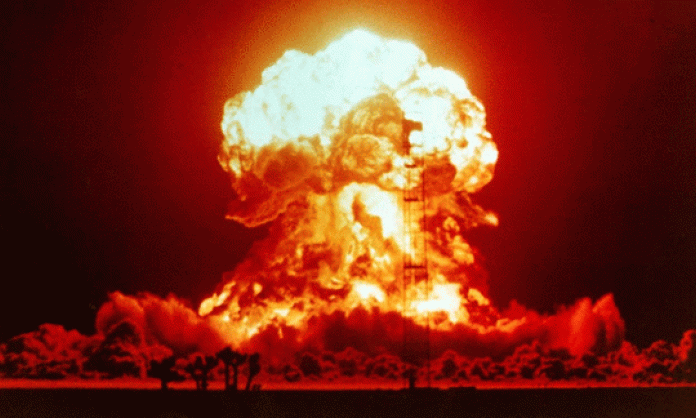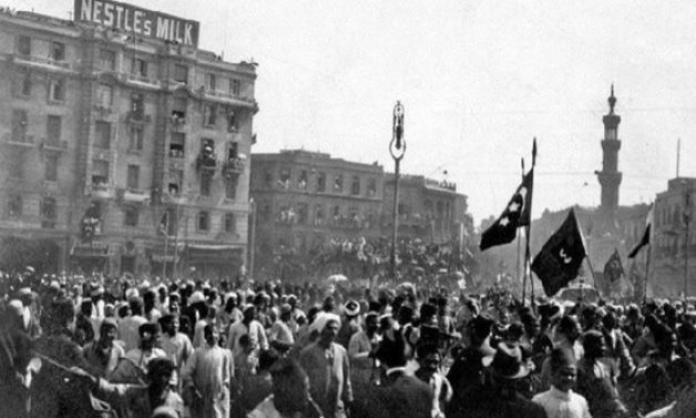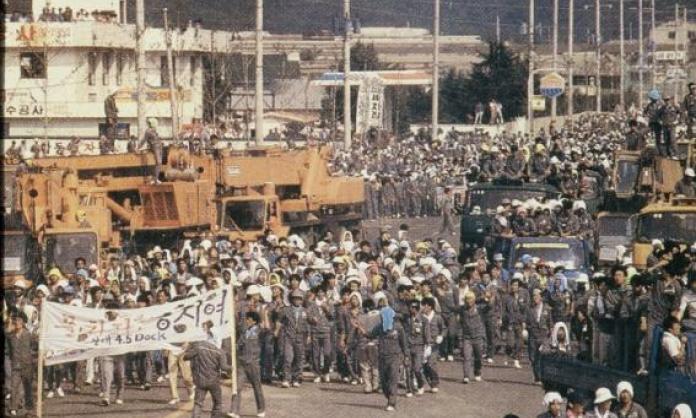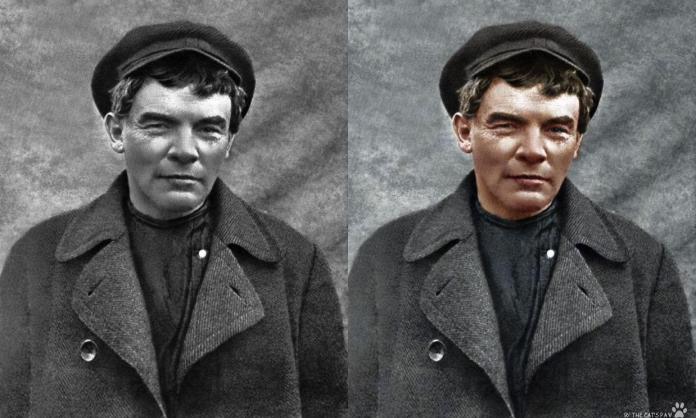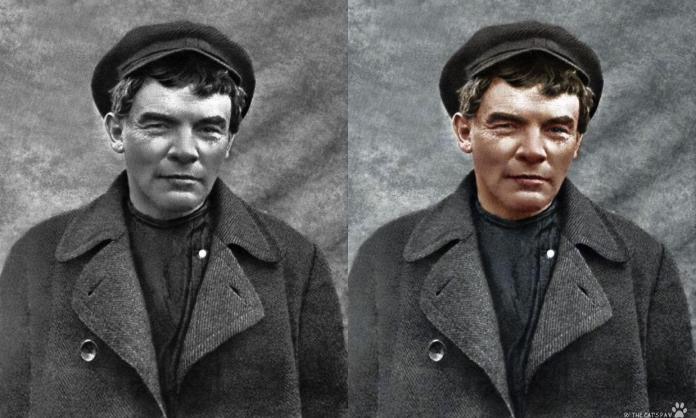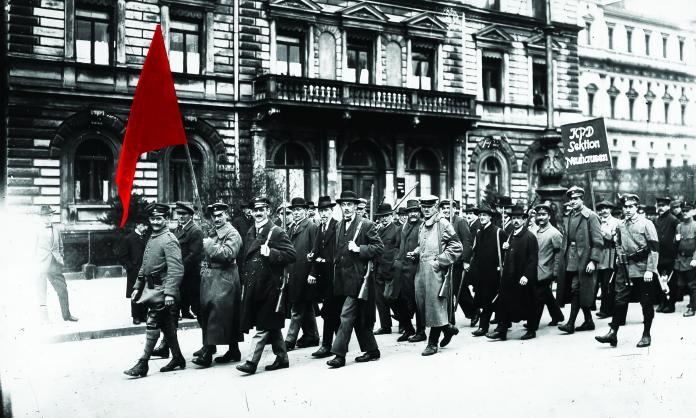My dad was a navigator on British Royal Air Force nuclear-armed Vulcan bombers in the 1970s. Stanley Kubrick’s 1964 classic Dr Strangelove is among his favourite films. He loves the absurdity of it: the future of humanity staked on the whims of an unhinged US general and a bomber crew fastidiously following a launch procedure that leads unremittingly to global nuclear war. Somewhat disturbingly, he regards the film as a more or less accurate portrayal of the reality of the Cold War as he experienced it.
Dad was, at times of heightened tension, ready to get in the air within minutes. He was expected, if instructed, to rain nuclear death on Russia. When combined with the Russians then bombing targets in the US, Britain and Western Europe, his actions would almost certainly spell the end of human civilisation.
RAF crew members’ families were to be left behind, death by fire awaiting them. Knowing this, my mum and her friend planned for the worst: they would take the kids and a bottle of whiskey and drive out into a field, hoping for an inebriation that might ease the path to physical annihilation.
The diabolical logic of “mutually assured destruction” (more fittingly known by its acronym, MAD) was captured by Albert Einstein when he said, “I know not with what weapons World War III will be fought, but World War IV will be fought with sticks and stones.” This warning wasn’t heeded.
The number of active nuclear warheads in the world today is significantly less than in the days of MAD. Nevertheless, the estimated 16,300 bombs are still more than enough to destroy civilisation. And there are increasing signs of a push from the world’s “nuclear club” members to modernise their arsenals. In the words of retired US general and former NATO commander Wesley Clark, in the context of emerging conflicts in Ukraine and elsewhere, the “nuclear deterrent must be re-emphasised”.
The logic of capitalism
It was supposed to turn out differently. In the immediate aftermath of the collapse of the Soviet bloc, demands for nuclear disarmament gained traction. So why are we still burdened with these risks? The answer lies in the economic dynamics of capitalism – in the competitive global scramble for profit and the military conflict that arises from it.
“Accumulate, accumulate! That is Moses and the prophets!” wrote Karl Marx in volume 1 of Capital. Business makes money by harnessing the labour of workers to transform resources into commodities for sale on the market. Their success depends on the efficiency with which they carry out this task – their ability to source cheap materials, the extent to which they can hold down the costs of labour, investment in new, productivity-enhancing technology and so on.
Left to itself, this dynamic drives a race to the bottom. If capitalists can cut costs by lowering wages, overlooking safety standards or polluting land, air and water, they will. That’s not because the capitalist class is devoid of morality, although many in its ranks are. The problem is that each is locked in competition with the others. The first to put the needs of humanity above their own economic bottom line would be the first driven out of business altogether.
The competition is never purely economic – often businesses will engage in industrial espionage to steal competitors’ secrets and business plans, will engage in practices to undermine competition and even go so far as to sabotage their competitors’ operations.
When companies become large enough that their operations span several countries, competition is lifted to yet another level. The role of a national state becomes crucial in securing the interests of its capitalists against rivals from abroad. The capitalist ideal of “global free trade” is shown to be a myth as states engage in trade wars, pry open underdeveloped areas by force, enact sanctions on some rivals and reduce others to rubble in brutal conflict. As neoliberal columnist Thomas Friedman wrote in 1999: “The hidden hand of the market will never work without a hidden fist. McDonald’s cannot flourish without McDonnell Douglas, the designer of the F-15.”
It’s no accident that the 20th century was by far the bloodiest in human history. Every time economic competition between competing powers intensified, political tension and military conflict were the result. As the current situation in the Middle East and the Ukraine testifies, things aren’t shaping up much better in the 21st. The global capitalist class was aptly described by Marx as a “band of warring brothers”. The trillions of dollars that, year on year, are poured into increasingly sophisticated means of destruction are necessary, from the perspective of capitalists, to ensure that their loot and their spheres of influence are protected from the hands of rival capitalist gangs.
Atoms for war
The nuclear industry is like a crucible in which all these destructive elements of capitalism have been melded into a single deadly alloy.
From the beginning, the industry was inextricably linked with the imperialist scramble for global power and control. The US bombing of Hiroshima and Nagasaki in August 1945 provides the obvious example. The attack is commonly justified as necessary to save the lives of US military personnel who would otherwise have been forced to carry out a land invasion. However, in the months leading up to the bombing, Japan was already signalling a desire to surrender. Subsequent statements by US military, diplomatic and political leaders indicate that they were well aware of this.
The establishment pressed on with this crime against humanity in order to send a message to the USSR and to provide the US with increased leverage in diplomatic negotiations over a post-World War II geopolitical “settlement”. The destruction of two major cities and the deaths of
hundreds of thousands of Japanese civilians were the price paid for the US’s desire to showcase its new military superiority to maximum effect.
The US monopoly on the destructive power of nuclear weaponry was short-lived. The USSR conducted its first successful nuclear test in 1949, triggering an arms race that resulted in the production of tens of thousands of warheads over the subsequent three decades.
Australia was more than willing to play its part in this. Frank Walker’s recently published Maralinga: shame and betrayal in the Australian desert, reveals that the Menzies government gave Britain carte blanche to test its developing nuclear weapons capacity on Australian soil in the 1950s. The full fallout from these tests, including the impact on military personnel who were essentially used as guinea pigs, remains largely hidden to this day.
It was in the context of this global arms race that nuclear power first appeared on the scene as the supposedly “peaceful” application of nuclear technology. The first nuclear
reactor in the US was built solely to produce the plutonium required for the manufacture of bombs. Over time, however, the potential to profit from the generation of electricity from fission provided an added incentive for the development of the industry.
A cycle of destruction
Even putting aside the connection between nuclear power and the civilisation-threatening destructive potential of nuclear weapons, the industry is highly damaging from one end of the nuclear cycle to the other.
The first stage of the process – mining uranium – is particularly relevant to Australia, home to an estimated 31 percent of the world’s known uranium reserves. The mining requires huge volumes of water, which is typically combined with highly toxic chemicals such as hydrogen peroxide and sulphuric acid and pumped into the ground to separate the uranium from surrounding material through leaching. The daily consumption of tens of millions of litres of water is itself a problem in a country like Australia, but it’s in the vast quantities of toxic “tailings” from this process that the real danger lies.
The historical record speaks for itself. According to the Gundjeihmi Aboriginal Corporation, which represents the local Mirarr people, over the 34 years of operation of the Northern Territory’s Ranger mine, there have been around 200 leaks, spills or other breaches of the mine’s operating licence. Most recently, in late 2013 the collapse of a leach tank resulted in a spill of about one million litres of radioactive waste over the mine site.
Given Australia’s natural advantage in this area, business and
government have always had an eye on further development of the industry. The anti-nuclear movements of the 1970s and early 1980s kept this aspiration in check. In recent years, however, state and federal governments have tried to expand uranium mining. New mines are planned in Queensland and Western Australia, and the owners of the Ranger mine are currently pushing hard for an extension of operations there. The federal government has agreed on terms for the export of uranium to India, which has refused to sign the nuclear non-proliferation treaty.
The second stage also presents dangers, as the ongoing disaster at the Fukushima nuclear power plant in Japan attests. The worst case scenario for Fukushima is the collapse of the badly damaged reactor building 4 – which houses spent nuclear fuel rods that together contain about 10 times more radioactive material than was released at Chernobyl. The collapse of this building, which is quite possible given the frequency of earthquakes in the area, could set off an explosive reaction that would leave much of Japan uninhabitable for generations to come.
Even assuming the situation at Fukushima remains “under control” and there are no further damaging explosions, the volume of radiation already released is enough to contaminate air, sea and land for decades. Those who have been evacuated from the area around the plant are unlikely ever to be able to return, and the full impact of radiation exposure affecting millions of people in Japan, and to a lesser extent other countries bordering the Pacific, will not be known for years.
This hasn’t been enough to provoke any significant shift away from nuclear power. Under pressure from a public horrified by the disaster, a number of governments have made commitments to phase out nuclear. But, largely due to developments in Asia – where countries like India and China are continuing to expand their nuclear capacity – the industry as a whole continues to grow. Even in Japan, where, understandably, a large majority is strongly opposed to nuclear power, the government of prime minister Shinzo Abe recently announced a policy to restart the country’s reactors at the earliest opportunity.
Finally, there is the question of what happens with the 10,000 or so tonnes of radioactive waste produced by the nuclear industry annually. This waste will remain extremely harmful for, on some scientific estimates, more than a million years. The potential for waste to be securely stored over such an immense time is questionable, to say the least.
If the record of leaks at existing storage sites is anything to go by, we have ample reason for concern. In 2008 a German nuclear waste disposal facility buried deep in a disused salt mine in Lower Saxony was found to have been leaking radioactive waste for more than two decades. The 126,000 barrels of waste at the facility currently lie jumbled in piles under now radioactive water. The German government is currently exploring options for the removal of the waste and decontamination of the site. Findings are not expected until 2020 at the earliest.
More recently, in February 2014, one of the world’s three so-called “deep nuclear repositories”, in the US state of New Mexico, had to be shut down after a drum containing radioactive material burst open – contaminating not only the underground tunnel in which it was stored, but, via the ventilation system, the air outside the facility. Thirteen workers subsequently tested positive for radiation exposure.
A solution to climate change?
In recent years proponents of nuclear power have repackaged their arguments in terms of its supposed potential to address climate change. Nuclear, we’re led to believe, is a “clean, green” alternative to fossil fuels. Yet, even putting aside the environmental impact and inherent risks of nuclear proliferation that would accompany the expansion of nuclear power generation, the case just doesn’t stack up.
The world’s 435 operable nuclear reactors produce only around 12 percent of the electricity supply. Factoring in the necessary decommissioning of ageing plants (itself a lengthy and expensive process, the average reactor now costing an estimated US$500 million to deactivate), any significant increase in this proportion would require a massive program of construction – on the order of 1,000 new plants over the next decade.
According to the most generous estimates, the cost of constructing a single new nuclear reactor is between US$5 and $10 billion. So for the construction of 1,000 we would be looking at up to US$10 trillion. In addition, there is related infrastructure such as new uranium mines, enrichment and transportation facilities, waste storage facilities and so on. If there are trillions of dollars available for nuclear, why not use that money to fund a global shift to a combination of wind, solar, tidal and other renewable sources that sustainably could provide for the world’s energy needs?
The alternative
It’s here that we come back to the core of the problem. It’s not that business and political leaders simply don’t understand the risks of nuclear or haven’t heard a compelling case for renewables. Rather, they’re tied up, and tied together, in a system where the short-term profits of the few will necessarily win out over the long term interests of society as a whole.
In the global capitalist system, the future of humanity is more and more staked on a “cost benefit analysis” carried out by a global elite positioned to reap all the short term benefits while ignoring the longer term costs.
From any rational, human perspective, nuclear makes no sense. But nuclear makes perfect sense from the perspective of powerful, established energy giants like Japan’s Tepco, for whom any serious shift to renewables would mean forgoing the billions of dollars in profits still to be made from their existing nuclear infrastructure.
Nuclear makes sense to the world’s imperialist powers, who want a supply of nuclear material that can be used, in General Wesley Clark’s words, to “re-emphasise the nuclear deterrent”.
Nuclear also makes sense to government and big business in Australia, which stand to reap windfall profits from the exploitation of the large uranium reserves, the final obstacles to which are rapidly being removed.
It may seem like we’ve moved on from the days of “mutually assured destruction”. The reality, however, is that the underlying competitive dynamics that brought the world to the brink of nuclear annihilation on numerous occasions in the Cold War are very much with us to this day.
A shift away from this destructive dynamic requires a fundamental transformation of our society. In place of the pursuit of profit at all cost, we need a system in which the economic life of society can be rationally planned and regulated in accordance with human need – a socialist system in which private ownership and the profit motive are replaced by democratic control over the productive life of society by the mass of workers and the poor.
It is only with the foundation of such a society that we will be able, finally, to give due weight to the words of Karl Marx when he wrote, in volume 3 of Capital: “Even an entire society, a nation or all simultaneously existing societies taken together are not owners of the earth, they are simply its possessors, its beneficiaries, and have to bequeath it in an improved state to succeeding generations, as good heads of households.”




